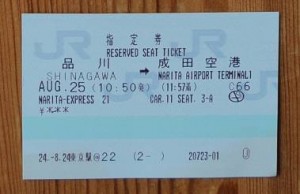After writing the post about my troubles with the expiration dates, I realized that it could be even worse: They could write “25” instead of “13“.
 Japan is a monarchy, and every emperor has his own era name. The reigning emperor ascended the throne in 1989, which marked the beginning of a new Japanese era. Currently, we live in Heisei 25, and while Japan is mostly using the standard Gregorian calender, the era years, called nengo, are still used – for government documents, CV’s, or on railway tickets, for example.
Japan is a monarchy, and every emperor has his own era name. The reigning emperor ascended the throne in 1989, which marked the beginning of a new Japanese era. Currently, we live in Heisei 25, and while Japan is mostly using the standard Gregorian calender, the era years, called nengo, are still used – for government documents, CV’s, or on railway tickets, for example.
The era name is used as posthumous name for the emperor reigning through it, so the reigning emperor Akihito will be referred to as emperor Heisei after his death; and he was born in the year Showa 7, the era (and now the name) of his father. This is actually in line with Buddhist customs, where the deceased acquire a new name under which they are worshipped on the family altar. Note that a new era can start at any time during a year, so for example 1989 is known both as Showa 73 and Heisei 1. After that, the era years start on January 1st as usual.
To avoid confusion in Western writing, era years can be distinguished by using their first letter as abbreviation before the number, so it would be appropriate to write H25 for the current year. It is good that the last four eras – reaching back to the mid 19th century – all start with a different letter: Going back in time, we have Heisei (peace everywhere, since 1989), Showa (abundant benevolence, since 1926), Taisho (great righteousness, since 1912) and Meiji (enlightened rule, since 1868). The Meiji emperor was also the one to decree the rule of “one emperor – one era”, as before that, era names changed much more frequently – during his father’s reign of 21 years, there were seven different eras. Then the names were changed almost at a whim – both in case of disasters or lucky events, a new name was chosen to bring more luck to the country. Automatic name changes took place in certain fixed years of a regency, and at some point in history, it was common for the emperor to abdicate after a rather short reign, yet increasing the number of eras even further.
The tradition of era names is modeled after that of the Chinese court, and it was officially and finally adopted in 701 by emperor Mommu, after two attempts of doing so before were short lived. As the Japanese don’t seem to abandon their traditions lightly, I guess their eras will be around for as long as there is an emperor – and I don’t see that changing any time soon either.
